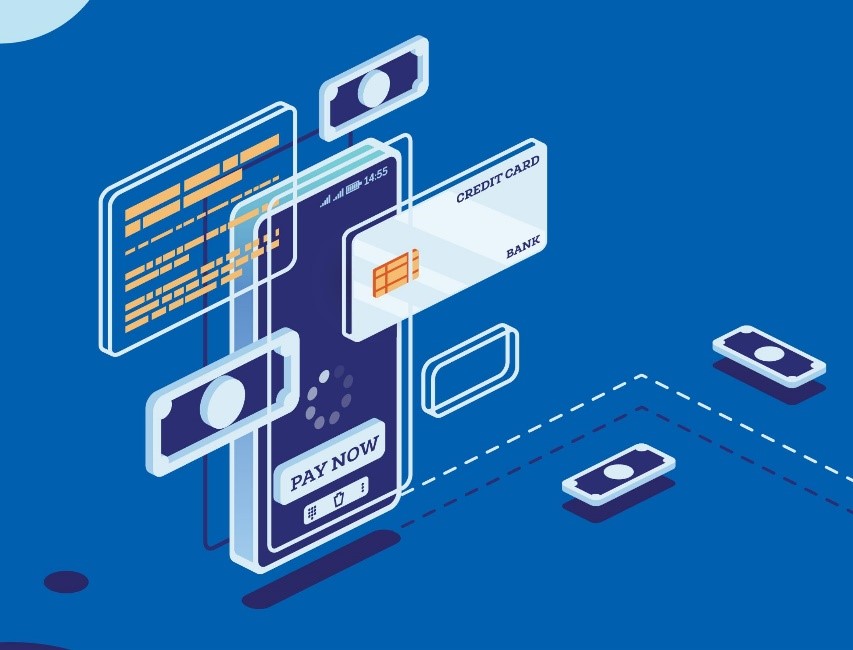What you’re really embedding when you embed financial products
Embedded finance has been ‘de rigueur’ as a topic for a few years now.

An embedded world is a world where trust is essential and needs to be constantly renewed
Or so I thought…
Because I have been speaking at industry events and in board rooms about it ‘by popular demand’ for the last… let’s call it three to four years.
Talking about how open finance regulation meets BaaS aspirations… how regulatory directional shifts and accelerating technology maturity and adoption mean a whole new world is opening up before us…
It has been exciting, heady stuff… talking about this.
And doing this… actually. Building a BaaS platform was part of the day job not so long ago.
It is really exciting stuff… for me.
But the reality is… it’s been all the rage for a very small group… fintech and banking geeks have been the only ones excited about this until recently.
When I tried explaining all this to my sister, her reaction was, “What? Like Uber? We’ve had that for a while, how is that new?”
“What’s the big deal? Who cares?”
Talk about bursting my bubble.
She’s not wrong, though. From a consumer perspective, the excitement we experience on our side of the fence is… just not there.
From an industry perspective, though… it’s a different story. Especially if you take the reports that every consulting firm is throwing our way these days, businesses care too. Especially as, apparently, the embedded finance opportunity was sized at $58 billion in 2022 and is expected to exceed $730 billion by 2032.
Some reports put that number above $1 trillion for the same timeframe.
If those numbers sound made up, by the way, it’s because they are.
They take things happening today and size them… stretch them… add a sprinkle of optimism for steady growth and hey presto. We have a trillion-dollar prize on our hands.
The reality behind the figures is more complicated, of course.
The embedded finance opportunity is huge, don’t get me wrong, but it’s not all net new money. So, if you are going after this market because the prize seems worth the effort… working out who you are stealing market share from is not insignificant.
Because it may be… yourself.
That number looks very different if you are a new player coming into the fray than if you are an existing provider trying to defend your position from yet another drastic change.
So how real is this opportunity space? How big?
And for whom?
Because while us banking and payment geeks have been getting super excited speaking largely to ourselves, we have awkwardly danced around not one but two elephants in the room.
The first is that… although this opportunity is huge… and very much here… to paraphrase William Gibson… it isn’t evenly distributed.
So, who is this a huge opportunity for? And who is it a headache for?
Because my personal view is that, for a legacy organisation… one that has been happily offering all the services that are currently in the process of being embedded… be it payments, revolving credit, unsecured loans, FX or insurance… for that organisation, embedding services is an overhead.
It’s a fractional business opportunity requiring considerable capital expenditure and operating cost increases.
That cost will vary depending on the age of your existing tech estate and the size of the uplift needed to participate.
Whatever it is, whether it’s whopping migrate-away-from-your-mainframe strategies or slight extensions to your open banking compliance, if you were in business before this became possible… you need to do some work to be ready… and more importantly… some of that juicy multi-billion dollar ‘opportunity’ the consultants are flagging is your existing customer base. That’s your current business they are declaring open season on.
So, the opportunity for you, in this case, is defensive.
Valuable.
Yet.
Not quite as exciting.
If you are a provider designed for the unevenly distributed future – i.e. the present – then the uplift is not a concern. This cannibalisation is not a concern. And the opportunity is huge.
And the opportunity is to stop talking to ourselves and do what firms are increasingly doing: reach out to the real world and say, “Hey… wanna play?”
Because there is some potentially very exciting stuff here for non-financial services providers to play with. Stuff that gives value to their shareholders and the customers.
And the advantage is that you don’t need to understand card issuing to offer a branded, blended loyalty credit card to your customers loaded with offerings that go beyond a competitive APR.
You need to know your customers and find a partner who is good at the geeky stuff.
I would suggest that the embedded finance capability currently available in the market is way more mature than the available use cases suggest.
The use cases are boring.
Remember the first time you heard about Uber or Klarna and went, “Wait… What?”
The use cases we have seen since embedded finance became possible are the opposite of that.
They are dull.
They have lacked creativity.
So, getting the real economy engaged in thinking through the art of the possible is a case of ‘about time’.
But make no mistake: although the opportunity is universal, the playing field is not even, because the ability to execute is not equal among all players. A combination of legacy constraints, leadership constraints and imagination deficits makes it all a rather unfair race.
So, if you are entering this space bursting with ideas, you should double down on the unfair advantage of picking a partner that is sea-worthy and ready. Incumbent banks don’t have that option, by the way, because for better or worse, they are lumbered with themselves, so they need to make some hard decisions about opportunity size, opportunity cost and speed of execution constraints. It is possible. But it is harder.
For consumer brands entering this arena, it’s a different story. They can pick partners that don’t slow them down.
And it’s an almighty advantage to leave untapped.
If you can avoid the people talking to themselves, dodging the proverbial elephant in the room we just discussed… why wouldn’t you?
Plus… there was a second elephant in that room. And we all need to be mindful of that.
You remember I said there were two, right?
If the first elephant is the fact that this shiny toy isn’t equally accessible to all when it comes to service providers… the second elephant is that this shiny toy may be dangerously accessible to all when it comes to consumers.
Everyone knows that when you get into an Uber you will pay a fare.
Many have learned the hard way that your express checkout for Amazon is exactly that, and although you thought you had a bit more time to make up your mind fully, you are now the proud owner of 12 flamingo-shaped martini glasses. Next time, you will know.
But around half (46%) of the young people (aged between 18 and 34) in the UK are unaware that they can get into debt using BNPL products… and they are further unaware that a BNPL instrument is very, very similar to an unsecured loan, albeit not regulated the same way.
This research was quoted in This is Money in March 2024 by the way, in case you were hoping you could ignore it as ‘early teething problems’.
Now, for the avoidance of doubt, I don’t think this is a BNPL problem.
It is a financial literacy problem.
Which is an everyone problem, because if we are embedding financial products, we are essentially embedding financial choice.
Are the triggers for that choice clearly understood?
Are the options and implications clearly understood?
If we are going to go down the inevitable embedded route, what assumptions are we making about people’s financial literacy? About what people know about the products and choices we are now making frictionless?
And knowing that nobody read the terms and conditions of their loan before embedded finance made it fast and easy to click ‘agree’ without a second thought, what is our ability and responsibility to educate? And how do we do that?
Is it increased friction? Making the moment of choice clearer?
Or is it more sweeping financial education?
People learn fast in the digital era, by the way.
When it first launched, US POS financing company Affirm found that people were freaked out by how quickly it would approve financing. So used were consumers to their bank mulling decisions over for months that an instant decision on a loan for that surfboard you always wanted felt… too good to be true.
So, the Affirm team added an egg timer and a pop-up window that said ‘processing your application’ or whatever. It didn’t do anything. It was a total placebo.
But it worked.
It gave comfort.
But – and this is the important thing here – within a few months it was no longer needed. The learning and trust curve of the consumers for the new service had been completed. They could absolutely believe it was real and quick. The egg timer was scrapped.
The lesson here is that people learn fast.
So, teaching them is a realistic option.
And I would argue, if we are going to embed choices of some complexity, teaching them as to what those options are… what the choices they are making are and the alternatives available to them… is a duty.
An embedded world is one of high levels of cooperation and trust. Between providers and their partners… and between providers and their customers.
We have the tech to work wonders.
An embedded world is an interconnected and interdependent world. It is a world where trust is essential and needs to be constantly renewed. And as we go through working through the exciting new use cases and the art of the possible… as we try to take the likes of my sister away from the space of ‘this isn’t new to me’ to a space of ‘hey, that’s cool’… we have a duty to keep the conversation ever-widening… sparing the folks who don’t care about the excruciating detail but never assuming that the foundational trust of our partners or consumers can ever be glossed over in the small print.
Because in embedded finance, trust is not just a parameter… it is the whole ball game.
#LedaWrites
 Leda Glyptis is FinTech Futures’ resident thought provocateur – she leads, writes on, lives and breathes transformation and digital disruption.
Leda Glyptis is FinTech Futures’ resident thought provocateur – she leads, writes on, lives and breathes transformation and digital disruption.
She is a recovering banker, lapsed academic and long-term resident of the banking ecosystem.
Leda is also a published author – her first book, Bankers Like Us: Dispatches from an Industry in Transition, is available to order here.
All opinions are her own. You can’t have them – but you are welcome to debate and comment!
Follow Leda on X @LedaGlyptis and LinkedIn.










































